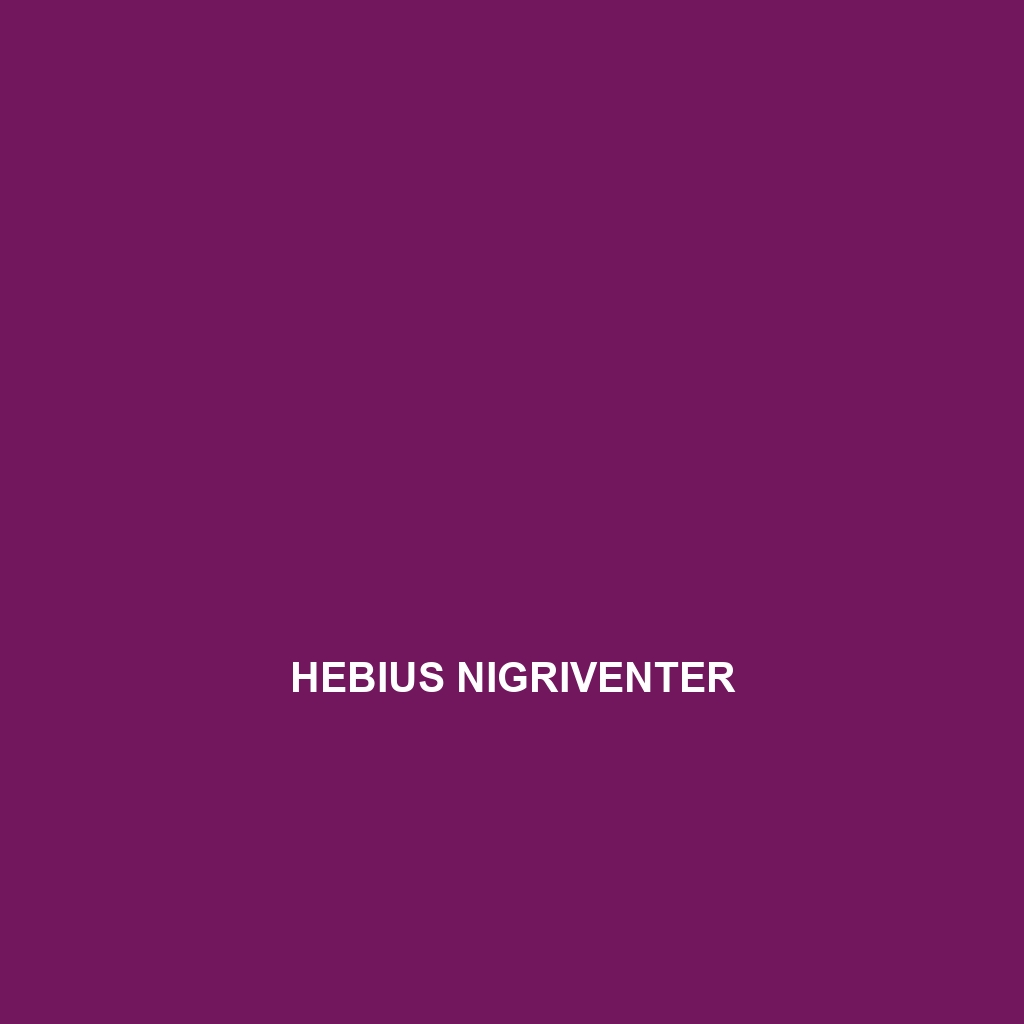Common Name
Hebius nigriventer
Scientific Name
Hebius nigriventer
Habitat
Hebius nigriventer, commonly known as the Black-bellied Water Snake, primarily inhabits a range of freshwater environments. This species is predominantly found in Southeast Asia, particularly in countries such as Taiwan, Japan, and parts of China. These snakes thrive in rainforests, temperate forests, and around freshwater streams and marshes, where they can readily access water.
The climatic conditions of these regions vary from humid tropical to subtropical climates, which provide ideal temperatures for their activity. These habitats are rich in moisture and vegetation, contributing to the ecological dynamics in which Hebius nigriventer plays a critical role.
Physical Characteristics
In terms of physical appearance, Hebius nigriventer typically reaches lengths of about 1 to 1.5 meters (3 to 5 feet). The species is characterized by a slender body and a distinctive dark coloration on its back, which provides effective camouflage within its natural habitat. The most striking feature is its glossy black underbelly, from which it derives its common name.
Additionally, Hebius nigriventer possesses a smooth, scaled skin texture, making it quite agile in water. Its head is slightly flattened, and its eyes are positioned towards the top, adapting it for a semiaquatic lifestyle. These physical traits enable the snake to navigate its environments skillfully, whether in water or on land.
Behavior
Known for its primarily diurnal activity, Hebius nigriventer is often seen basking in the sun on rocks or vegetation near water bodies. While they are not migratory, these snakes exhibit local movement patterns linked to their search for food and mates. Socially, Hebius nigriventer tends to be solitary, joining others only during mating seasons or in areas rich in food resources.
This species displays a unique behavior of diving quickly when threatened, relying on its speed and agility to evade predators. Their mating rituals are equally fascinating, often involving elaborate courtship displays where males engage in competitive behaviors to attract females.
Diet
Hebius nigriventer is a carnivorous species, primarily feeding on fish, amphibians, and small invertebrates. They are opportunistic feeders, using their keen sense of smell and vision to detect prey in murky waters or dense vegetation. Their hunting techniques involve stealthy approaches followed by swift strikes to capture their meal.
This diet not only sustains their energy but also positions them as important predators in maintaining the balance of their ecosystems by controlling the populations of their prey.
Reproduction
The reproductive cycle of Hebius nigriventer typically occurs during the warmer months, with the mating season often peaking in late spring to early summer. Females lay between 10 to 20 eggs, which they deposit in moist, protected areas. The gestation period lasts about 60 to 70 days, after which hatchlings emerge fully formed, measuring approximately 20 to 30 centimeters (8 to 12 inches).
Parental care is nonexistent in this species; juveniles are independent from the moment they hatch, though they may seek out similar habitats to those of their parents. This reproductive strategy allows for a rapid population recovery in suitable environments.
Conservation Status
The conservation status of Hebius nigriventer is currently listed as Least Concern on the IUCN Red List. However, habitat destruction due to deforestation, pollution, and urbanization poses potential threats. Conservation efforts are essential in areas where their habitats are at risk. Local initiatives aimed at habitat restoration and public education on the importance of preserving water ecosystems play a crucial role in protecting this species.
Interesting Facts
One intriguing fact about Hebius nigriventer is its ability to hold its breath underwater for extended periods, allowing it to escape from predators and ambush prey silently. Additionally, their black underbelly not only provides camouflage but also aids in heat absorption from the sun, essential for thermoregulation in cooler climates.
Role in Ecosystem
Hebius nigriventer plays a vital role in its ecosystem, acting as both a predator and prey. As a predator, it helps regulate populations of fish and amphibians, thus maintaining the ecological balance. Conversely, this species is a source of food for larger predators, such as birds of prey and larger snakes. By fulfilling these roles, Hebius nigriventer contributes significantly to the health and stability of its aquatic and terrestrial environments.
